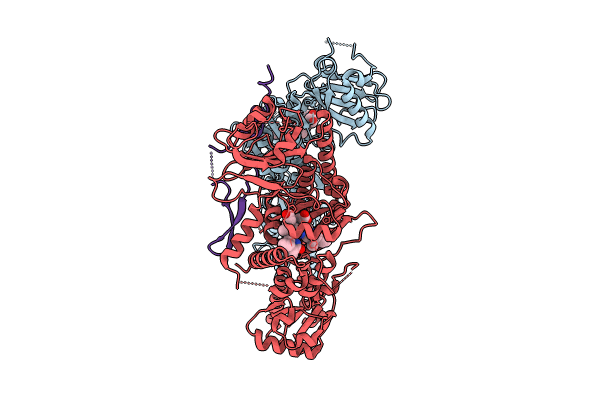
Deposition Date
2024-07-22
Release Date
2024-10-02
Last Version Date
2024-11-13
Entry Detail
PDB ID:
9IUZ
Keywords:
Title:
Constitutively active mutant(Y276H) of Arabidopsis phytochrome B(phyB) in complex with phytochrome-interacting factor 6(PIF6)
Biological Source:
Source Organism:
Arabidopsis thaliana (Taxon ID: 3702)
Host Organism:
Method Details:
Experimental Method:
Resolution:
3.19 Å
Aggregation State:
PARTICLE
Reconstruction Method:
SINGLE PARTICLE


